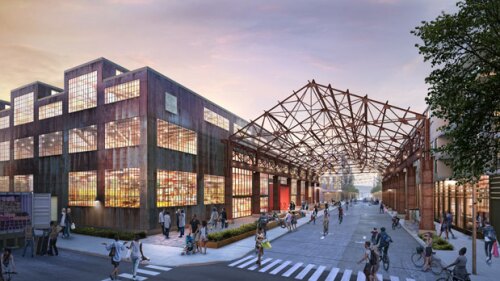- Online sales growth continues to outpace traditional retail sales.
- By 2015, $175 billion annually will shift out of U.S. stores to online sales; online sales could double by 2020.
- Stores currently have 3 to 15 percent excess space; retailers are moving to fewer and smaller stores--but perhaps higher rents.
- Retailers must move from creating shopping experiences to creating “favorite meeting spaces” where shoppers, especially Gen Y, can “curate” their own identities, says Corio’s David Armitage.
Today’s retail industry is feeling pressure from every direction, said Mitchell Weimer of Deloitte Consulting at the ULI Fall Meeting in Denver on Oct. 17. Changing consumer behavior, the still-stagnant macroeconomic environment, heightened competition, and price transparency are creating a huge cloud of uncertainty for the industry.
In the past, Weimer noted, geographical separation provided secure markets for most retailers; today, there is global competition, and even bricks-and-mortar stores compete with their own online platforms. In the short term, he suggested, stores should re-imagine and re-purpose their space, with more “showrooming” and “showcasing” of products, as well as creating “stores within stores.” Over the longer term, they will need to reduce their footprints and re-invent brands.
Andrew Nelson, director of research and retail sector specialist for RREEF Real Estate, noted that e-commerce sales have increased more than 12-fold since 1999, while in-store sales have grown 50 percent. Sales of cars, groceries, and personal care items remain “safe” for bricks-and-mortar stores, but sales of electronics, apparel, hobbies, and furniture all are migrating online. In addition, traditional shopping center staples – the bookstore, video rental store, etc. – are often being replaced by virtual products, such as e-books. Retailers themselves are driving this trend because online sales can mean more profit.
In the future, Nelson predicted, shopping centers will have more and smaller stores, with higher sales volumes driving higher rents. Commodity retailing and secondary locations will suffer, he predicted, while bricks-and-mortar winners will include luxury retailers, discount and value retailers, well-located grocery-anchored centers, and retailers offering compelling shopping experiences.
David Armitage, head of enterprise initiatives for Corio N.V., brought a European perspective to the discussion, noting that value-added taxes can make shipping costs prohibitively expensive in Europe, while the walkability of European cities supports shopping as a daily activity. His company is taking the shopping experience further with such traffic-generating activities as providing educational opportunities in vacant retail space, creating a demonstration food garden at one shopping center, hosting a high-profile international jazz festival, mining data to provide customized special offers, and using social media extensively.
Ultimately, the panelists agreed, people still seek human experiences and connections, and the retailers that provide compelling destinations for their customers as well as convenient online shopping options are the ones that will thrive.



